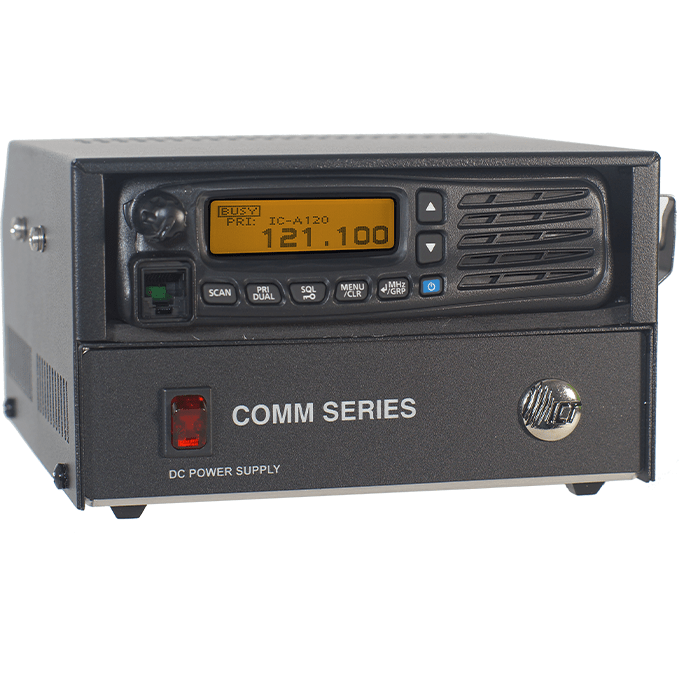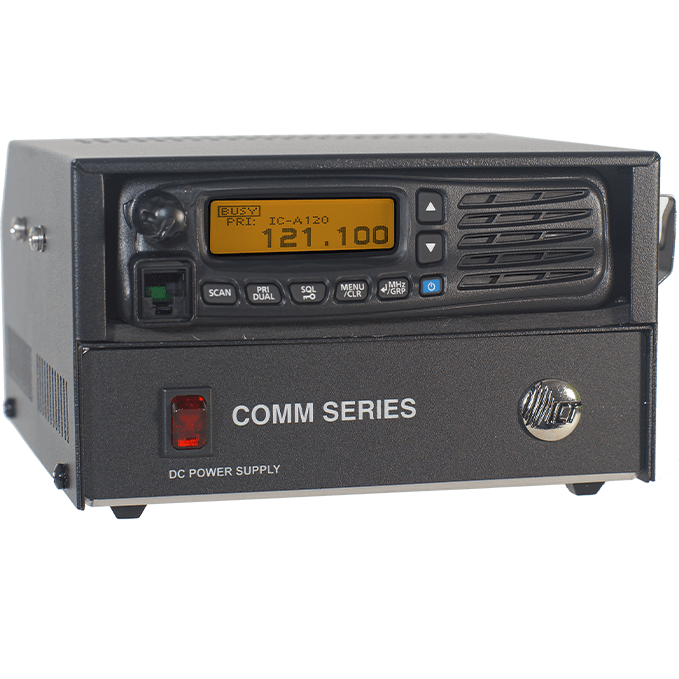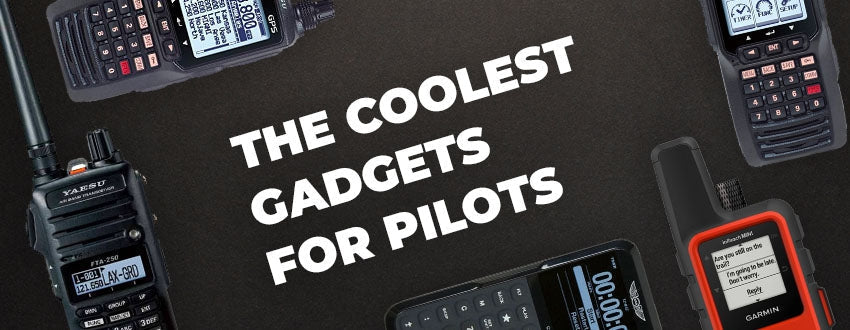¿Alguna vez has sentido curiosidad por saber qué se dicen entre sí los pilotos y los controladores de tráfico aéreo? Escuchar lo que dicen los controladores de tráfico aéreo (ATC) en un escáner es, sin duda, una forma fascinante de adentrarse en la comunicación aeronáutica y aprender más sobre cómo comunicarse correctamente con los controladores de tráfico aéreo.
Quizás seas un piloto en formación o simplemente te interese la aviación. Sin importar cuáles sean tus objetivos, esta guía te explicará todo lo que necesitas saber sobre cómo escuchar el ATC en un escáner.
RESUMEN
-
En Estados Unidos, como civil, es posible escuchar legalmente las transmisiones de control de tráfico aéreo.
-
Se necesita un escáner o receptor con acceso a frecuencias de aviación.
-
Comprender la jerga y las frecuencias del ATC puede mejorar su experiencia auditiva.
-
Las aplicaciones y sitios web digitales también brindan acceso a transmisiones ATC en vivo.

¿Qué equipo necesitas para escuchar el ATC?
Si desea escuchar el control del tráfico aéreo, necesitará un escáner o un escáner de radio capaz de recibir señales de muy alta frecuencia (VHF) en la banda de aviación.
Echemos un vistazo al tipo de equipo que necesitarías:
-
Escáneres o radios
Deberás buscar un escáner que admita frecuencias de aire entre 118.000 y 136.975 MHz . Hay excelentes modelos portátiles, como las radios Uniden Bearcat o Icom. Estas suelen ser las opciones más populares.
-
Teléfonos inteligentes o computadoras
Existen aplicaciones fantásticas como LiveATC.net , que te permiten transmitir comunicaciones ATC desde tu teléfono o computadora.
Es una alternativa conveniente si no desea invertir en equipo físico, pero desea escuchar vuelos comerciales o escuchar una autorización de despegue y aterrizaje.
También puede monitorear fácilmente múltiples frecuencias abriendo pestañas del navegador.
Tenga en cuenta que LiveATC tiene un retraso. Según las preguntas frecuentes de LiveATC, el retraso suele ser inferior a 20 segundos para la mayoría de los oyentes. El retraso depende de la fuente específica y de su conexión. Algunos usuarios han informado de retrasos que van desde 10 a 45 segundos.
-
Configuración de la antena
Una antena de alta calidad mejora la recepción de la señal. Colóquela en un área abierta o cerca de una ventana para obtener los mejores resultados.
Una vez que tenga su equipo o aplicación, sintonice las frecuencias ATC del aeropuerto más cercano para comenzar a escuchar.

Cómo encontrar frecuencias ATC
El ATC opera en una amplia gama de frecuencias, pero encontrar las adecuadas es mucho más fácil de lo que cree. Siga estos pasos:
-
Comience con la información del aeropuerto
Consulte recursos en línea como la Búsqueda de suplementos de cartas de la FAA, SkyVector o AirNav para encontrar frecuencias específicas para su aeropuerto local.
-
Comprenda los conceptos básicos
Las frecuencias ATC se dividen en sectores, como Tierra, Torre, Aproximación y Salida . Saber qué frecuencia sintonizar depende del tipo de comunicación que desee escuchar.
-
Escanear manualmente
Si su escáner tiene una función de búsqueda, puede simplemente escanear la banda de aviación hasta que detecte transmisiones. Esta es una excelente manera de descubrir nuevas frecuencias.
-
Monitorizar frecuencias comunes
Muchos aeropuertos utilizan frecuencias estándar para ATIS (Servicio automatizado de información de terminal) o control de tierra que son fáciles de encontrar. En aeropuertos pequeños o no controlados, puede escuchar a los pilotos comunicándose directamente entre sí en la frecuencia de aviso de tráfico común (CTAF) de la zona.

Tipos de comunicaciones de aviación
Cuando sintonices, te encontrarás con varios tipos de transmisiones. Las diferentes categorías te ofrecerán distintos tipos de cosas que puedes escuchar:
-
Tráfico aeroportuario y control terrestre
Estos cubren los movimientos de aeronaves en tierra y en las inmediaciones del aeropuerto. Los aeropuertos con más tráfico pueden tener controladores separados para las operaciones del norte y del sur.
-
Control de tráfico en ruta
Esto implica la comunicación entre los pilotos y los Centros de Control de Tráfico de Rutas Aéreas (ARTCC) mientras los aviones viajan a través del país.
-
Comunicación aire-aire
Esto es informal y se utiliza para la coordinación y comunicación de ubicación; los pilotos pueden chatear entre ellos, especialmente en áreas remotas.
-
CTAF (Frecuencia de aviso de tráfico común)
Se utiliza en aeropuertos sin torre para que los pilotos anuncien posiciones e intenciones.
-
Operaciones terrestres
Estos incluyen la comunicación con servicios como abastecimiento de combustible, descongelación y mantenimiento de vehículos.
Cada una de estas categorías tiene frecuencias dedicadas y los aeropuertos más grandes pueden tener múltiples canales para cada función.

Frecuencias AWOS, ASOS y ATIS
Para apreciar plenamente las comunicaciones de la aviación, es útil escuchar actualizaciones meteorológicas y operativas automatizadas. A continuación, se ofrece una descripción general rápida de estos sistemas:
-
AWOS (Sistema automatizado de observación meteorológica)
AWOS proporciona actualizaciones meteorológicas continuas, que incluyen temperatura, velocidad y dirección del viento, presión barométrica y visibilidad. Estos sistemas se encuentran generalmente en aeropuertos más pequeños y los utilizan los pilotos que planifican sus aproximaciones.
-
ASOS (Sistema Automatizado de Observación de Superficie)
ASOS informa datos meteorológicos similares a los de AWOS, pero con información adicional, como las condiciones del cielo y el tipo de precipitación. Se suele utilizar en aeropuertos más grandes y se integra con los sistemas del Servicio Meteorológico Nacional.
-
ATIS (Servicio Automatizado de Información de Terminales)
ATIS transmite actualizaciones grabadas sobre el clima local, las condiciones de la pista y otra información relevante. Los pilotos sintonizan ATIS antes de comunicarse con los controladores de tierra o de torre. Las actualizaciones tienen asignado un código de letra (como “Información Alfa”) para confirmar que los pilotos tienen la información más reciente.
Puede encontrar estas frecuencias en los mapas de los aeropuertos o en recursos en línea.

|
Icom IC-A120 - Transceptor de banda aérea VHF - Estación baseMejore la eficiencia de sus comunicaciones con el Icom IC-A120, repleto de funciones y diseñado para operaciones de vuelo. 
|
Consejos para escuchar
Escuchar a los controladores de tráfico aéreo puede ser una gran herramienta de enseñanza para los pilotos en formación y para quienes se están formando para convertirse en controladores de tráfico aéreo. A continuación, se ofrecen algunos consejos para aprovechar al máximo su experiencia:
-
Aprende la jerga
Familiarícese con las frases y la terminología más comunes del ATC. A continuación, se indican algunas:
Fraseología
Significado
Autorizado para despegar
Autorización para salir de la pista.
Mantener corto
Instrucción de detenerse antes de llegar a un punto específico, como una pista de aterrizaje.
Autorizado a aterrizar
Autorización para aterrizar en la pista especificada.
Andar
Aborte el aterrizaje y prepárese para volver a intentarlo o siga las instrucciones del ATC.
Haga fila y espere
Diríjase a la pista y mantenga la posición hasta obtener más autorización.
Graznido XXXX
Configure el transpondedor en el código de cuatro dígitos especificado.
Descender y mantener
Iniciar el descenso hasta la altitud asignada y mantenerla.
Escalar y mantener
Ascender a la altitud asignada y mantenerla.
Roger
Acuse de recibo de transmisión recibida.
Apoyar
Espere más instrucciones; no es necesario responder.
Tráfico a la vista
El piloto ha identificado visualmente la aeronave mencionada.
Incapaz
No se puede cumplir con la instrucción debido a limitaciones operativas.
Wilco
"Cumpliré" con la instrucción recibida.
Comuníquese con [Nombre de la instalación]
Cambiar la frecuencia de radio a la instalación especificada (por ejemplo, Torre o Aproximación).
La FAA proporciona un gran recurso para la fraseología de las comunicaciones por radio .
-
Categorías de comunicación ATC
Al sintonizarnos nos encontraremos con distintos tipos de transmisiones:
-
Tráfico aeroportuario y control terrestre: abarcan los movimientos de aeronaves en tierra y en las inmediaciones del aeropuerto. Los aeropuertos con mucho tráfico pueden tener controladores separados para las operaciones norte y sur.
-
Control de tráfico en ruta: implica la comunicación entre los pilotos y los Centros de control de tráfico de rutas aéreas (ARTCC) mientras los aviones viajan a través del país.
-
Comunicación aire-aire: a menudo informal y utilizada para coordinación, los pilotos pueden conversar entre sí, especialmente en áreas remotas.
-
Operaciones terrestres: incluyen la comunicación con servicios como vehículos de abastecimiento de combustible, de deshielo y de mantenimiento. Cada una de estas categorías tiene frecuencias dedicadas y los aeropuertos más grandes pueden tener múltiples canales para cada función.
-
-
Empieza de forma sencilla
Comience con aeropuertos más pequeños donde las transmisiones son más fáciles de escuchar.
-
Tomar apuntes
Escribe indicativos o instrucciones interesantes para investigar más tarde.
-
Practica la paciencia
Las comunicaciones ATC pueden parecer rápidas al principio, así que tenga paciencia y continúe.
-
Respetar la privacidad
Recuerde que escuchar es una actividad educativa y de entretenimiento. Evite compartir grabaciones sin permiso.
Aplicaciones y sitios web para escuchar ATC
Si prefieres omitir el hardware, las herramientas digitales facilitan la escucha de ATC en cualquier lugar:
-
LiveATC.net
Una de las plataformas más populares para transmisiones en vivo de control de tráfico aéreo.
-
Transmitir
Ofrece feeds para varios canales de seguridad pública y aviación.
-
Canales de YouTube
Muchos entusiastas de la aviación suben grabaciones ATC reales.
Estos recursos son especialmente útiles para escuchar comunicaciones ATC internacionales o centros de operaciones con mucha actividad como JFK o LAX.

Preguntas frecuentes
-
¿Pueden los civiles escuchar el control del tráfico aéreo?
Sí, es perfectamente legal en la mayoría de los países, incluido Estados Unidos, siempre y cuando no transmitas las transmisiones. -
¿Cuál es el mejor escáner para ATC?
Los Uniden Bearcat BC125AT y Icom IC-R6 son populares por su facilidad de uso y rendimiento confiable. -
¿Por qué la comunicación ATC es tan rápida?
Los pilotos y controladores utilizan frases concisas y estandarizadas para comunicarse con claridad. -
¿Necesito una licencia para escuchar ATC?
No se necesita licencia para escuchar. Sin embargo, transmitir en la frecuencia de una torre de control de tráfico aéreo es ilegal sin la certificación correspondiente.
Llevar
Ahora que ya sabe cómo hacerlo, escuchar el control del tráfico aéreo le abre las puertas a un mundo completamente nuevo de conocimientos sobre aviación. ¡Consiga su escáner, busque las frecuencias locales y disfrute escuchando cómo funcionan las comunicaciones de aviación!
¿Interesado en las comunicaciones de aviación?
¡Nuestras guías están diseñadas para ayudar!
-
Frecuencias comunes en la aviación: guía de comunicación para pilotos
-
Cómo volar siguiendo un patrón de tráfico en un aeropuerto sin torre
-
Pérdida de comunicación en vuelo IFR (qué hacer y procedimientos a seguir)
¿Le resultó útil este artículo?
¿Crees que nos hemos olvidado de alguna pregunta importante de la entrevista? ¡Cuéntanoslo en los comentarios a continuación!







